Congee For Baby
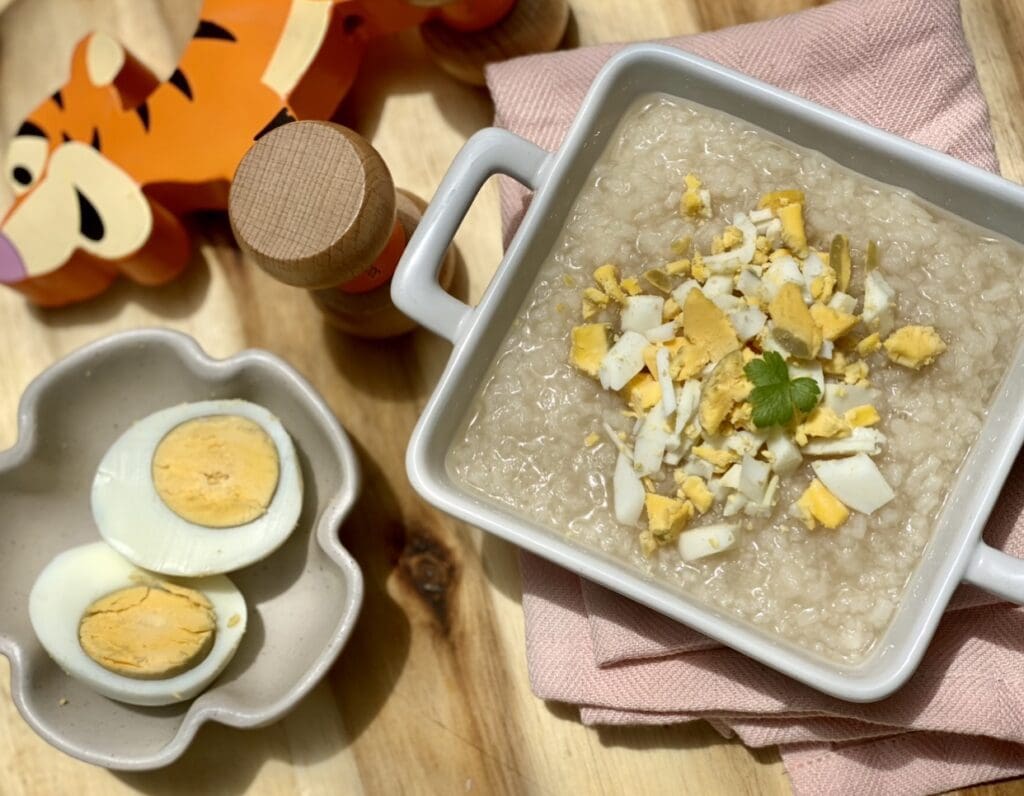
An easy step-by-step guide on how to make Congee For Baby using a rice cooker or over a stove. A yummy meal for babies over 6 months
Kai loves Congee
As soon as Kai moved on to solid food, it was all happening! I couldn’t wait to introduce him to the foods I loved.
I’m embarrassed to admit I thought Kai would automatically enjoy the foods I ate. Well, he was in my womb for 9 months and eating what I was eating!
At newly 3 years old, he’s so far proven me wrong. Kai hates condiments, vegetables, and most of the foods that are good for him! If you have a younger one, I envy you, because feeding Kai was much easier. After turning one and being exposed to different foods, he quickly knew the difference between the yucky and yummy ones!
One thing fussy Kai enjoyed since he was 6 months to now is rice. Steamed rice, fried rice, rice cakes, sushi or congee, Kai would eat it.
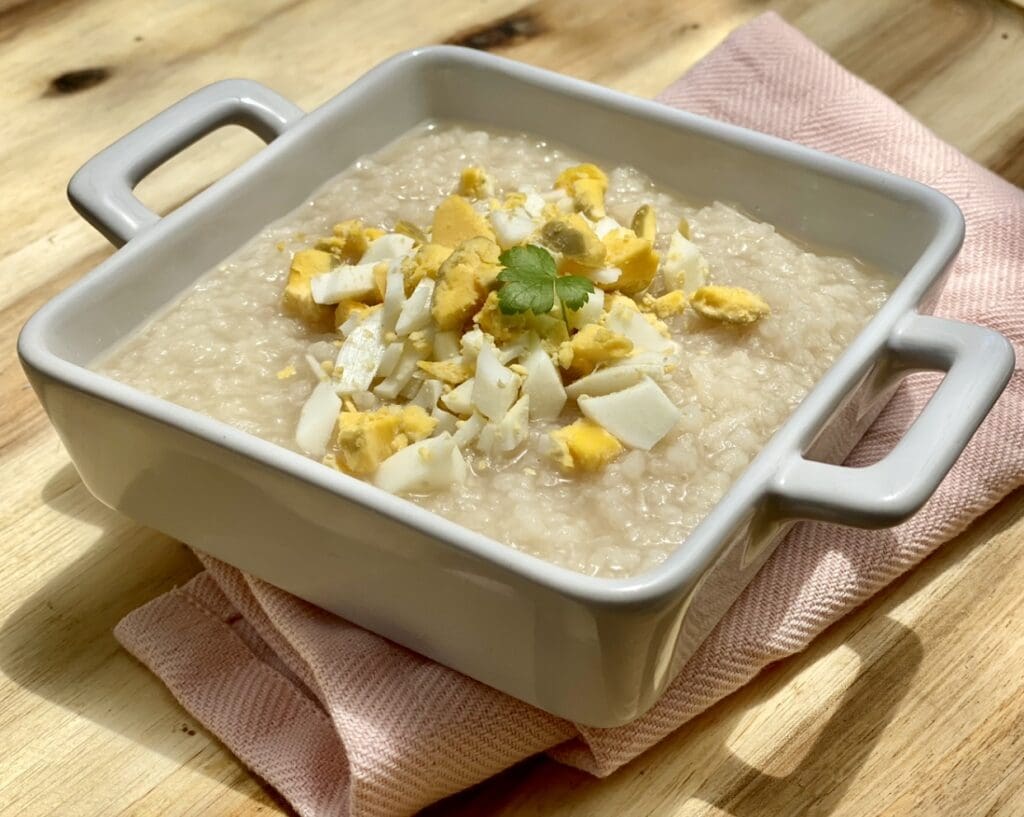
I love making congee and eggs for Kai using my cheap rice cooker. It’s effortless and quick, and he gets a relatively healthy, satisfying meal. A meal that he will eat without complaining!
The great thing about congee is we can vary it each time. I make him plain congee (rice and water only) if I’m serving it to him with a flavourful topping such as marinated chicken.
Most often, I just throw a couple of eggs into the rice cooker and pour water and salt-reduced chicken stock for flavouring. Once done, I just simply peel the egg, chop it and mix it into his congee.
The wonderful world of congee
Congee is something I associate with being sick, just like chicken soup. It literally is a hug in a bowl, so comforting and warming.
What is Congee?
Congee is Asian rice porridge, but instead of oats and milk, it’s rice and water!
The ratio of rice to water varies as some people like their congee thick and others may like it runnier. For this Congee For Baby recipe, I did a ratio of rice to water 1:9. This makes the congee a little runny, so it’s easier for little ones to digest.
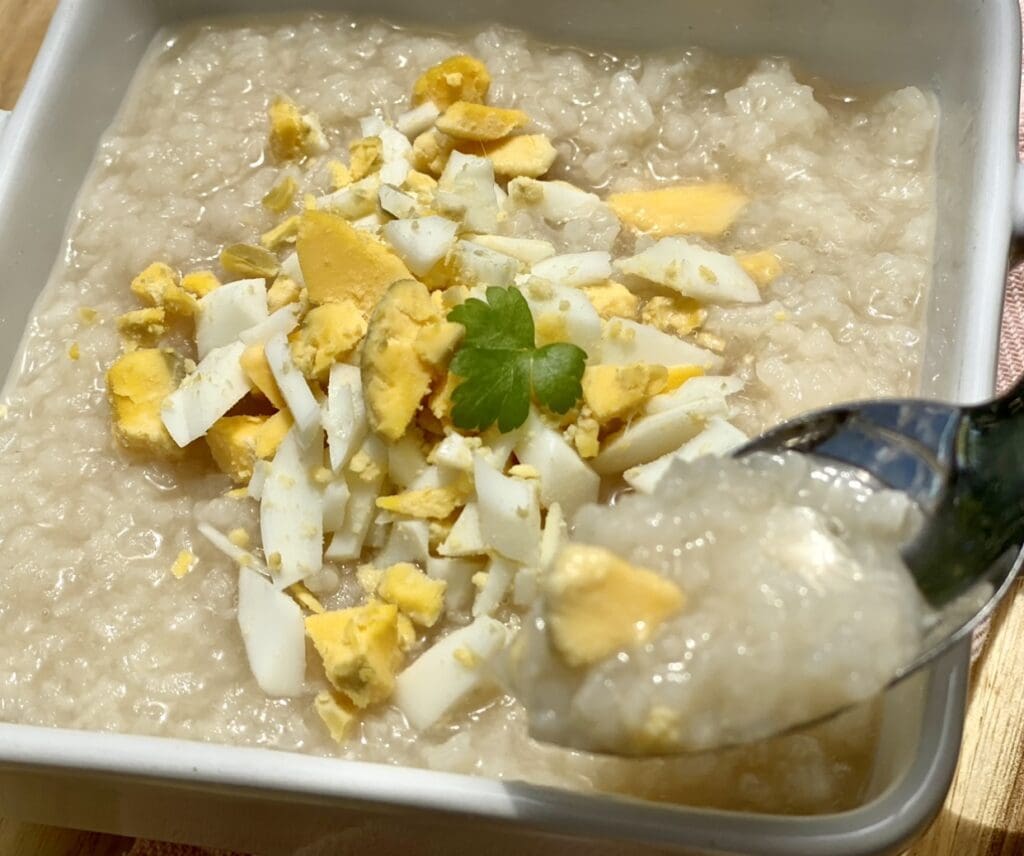
What is plain congee?
Plain congee is just rice and water with nothing else added. It’s usually served with flavourful toppings or side dishes to compensate for the bland taste. This is my favourite way to have congee!
For more control over salt intake, it’s best to make plain congee for babies under 12 months.
How to serve congee to a baby?
Serve the congee as it is or add toppings. Shredded chicken, boneless fish, or with an egg is how I served my congee to Kai. When he was younger, I would sneak in vegetables but he is harder to trick these days!
More yummy recipes for your little one to try:
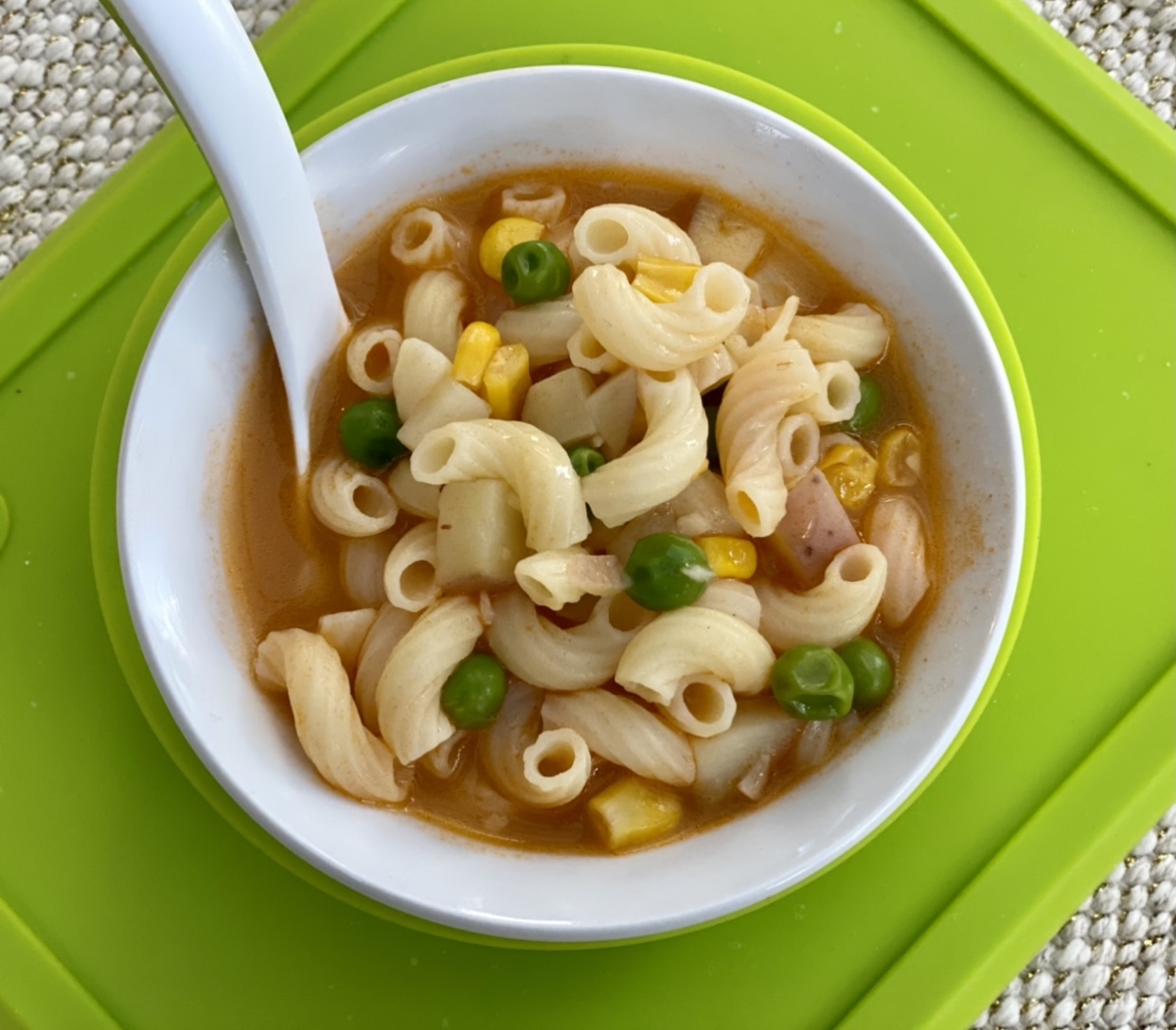
Pasta, Peas and Corn Soup
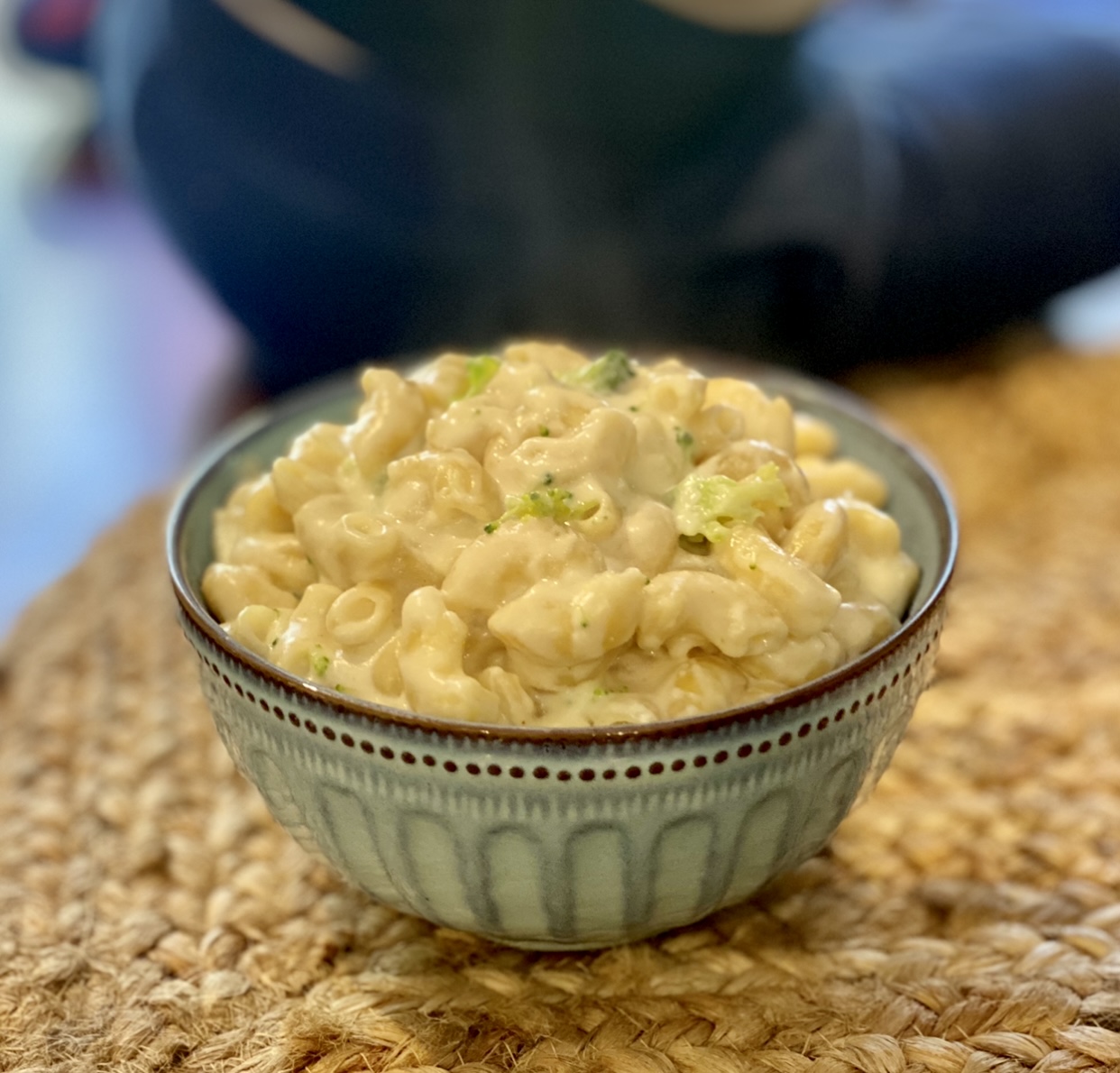
Mac & Cheese with Broccoli
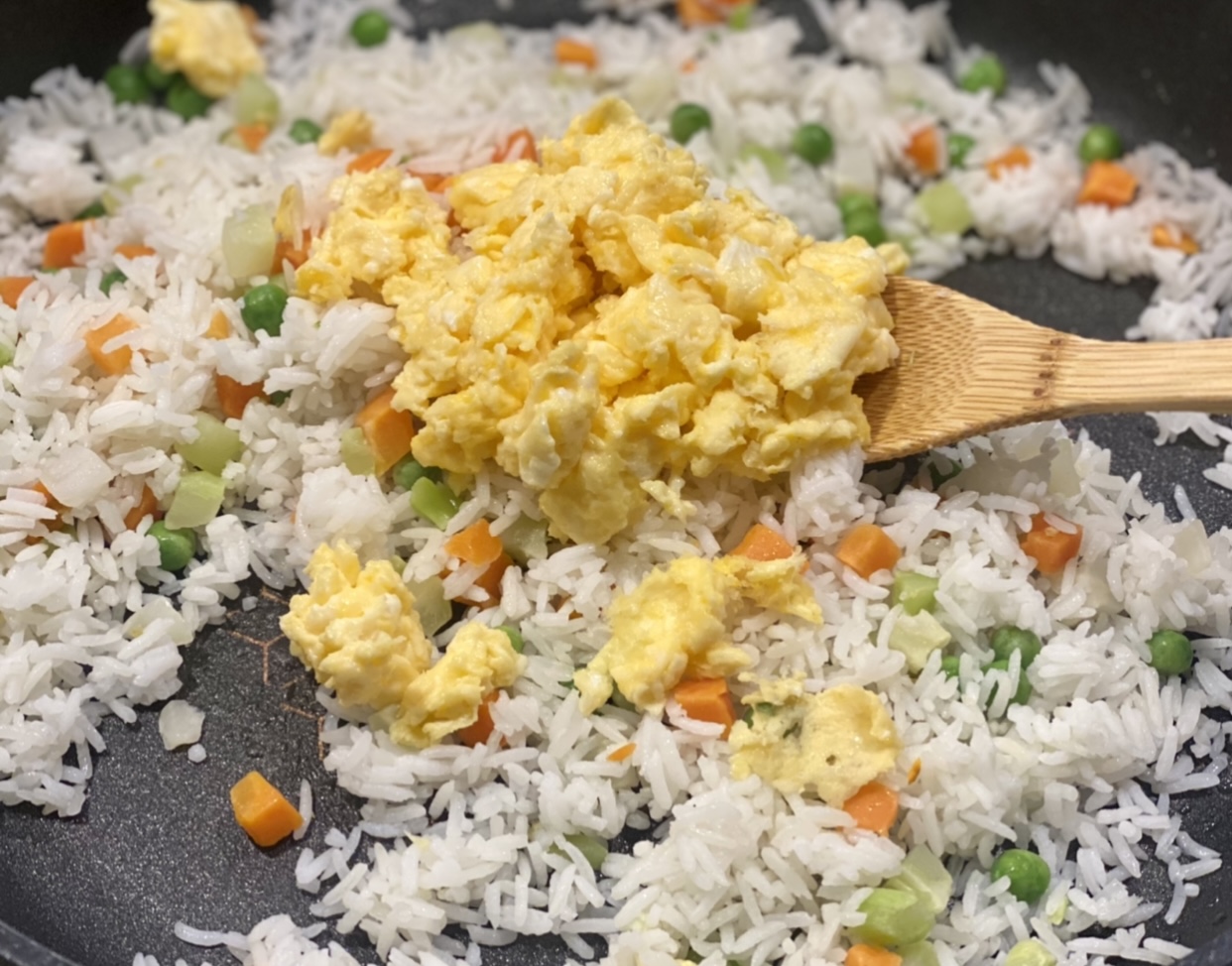
Egg Fried Rice with Vegetables
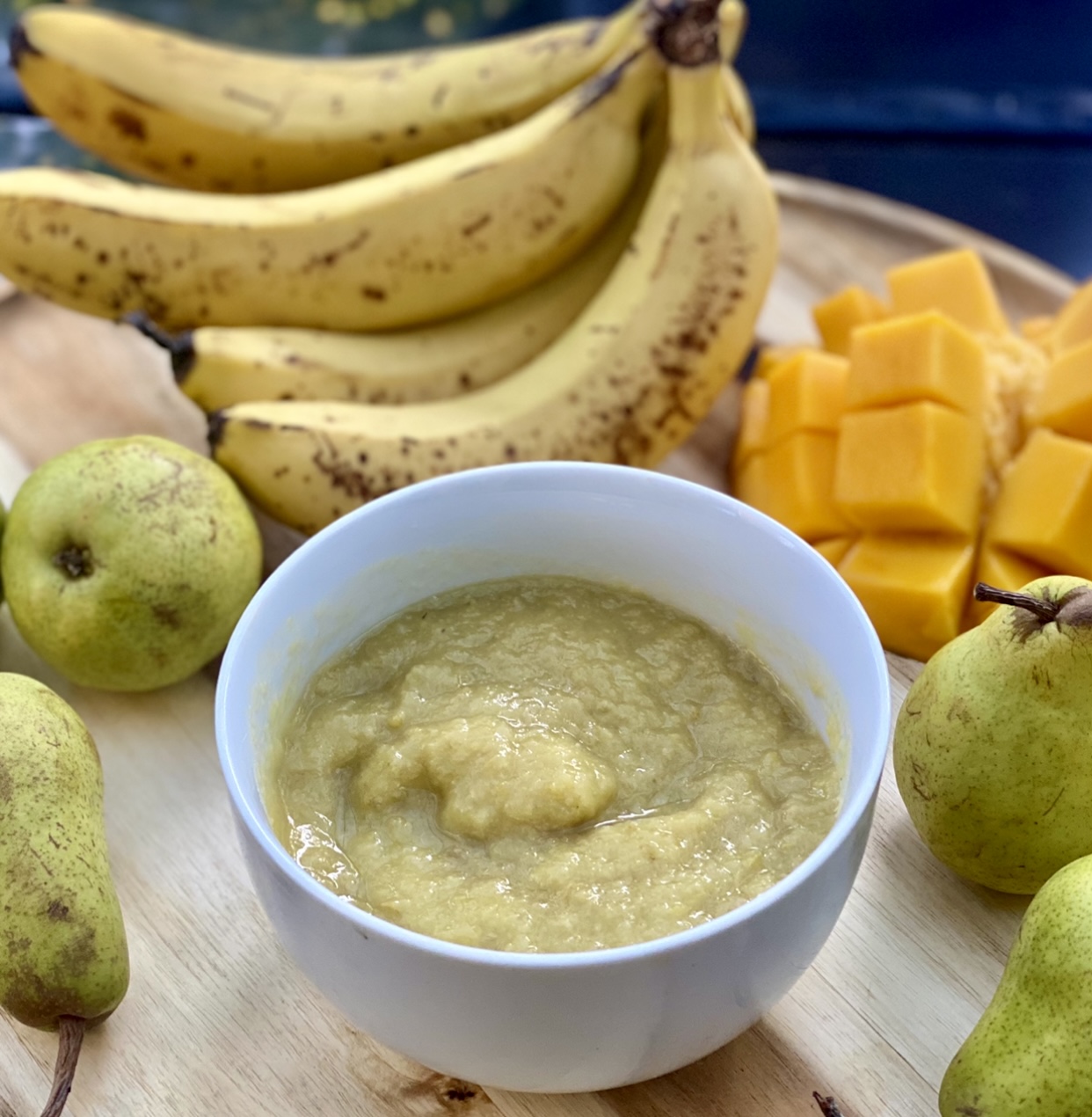
Mango, Pear & banana Puree
Congee For Baby Ingredients
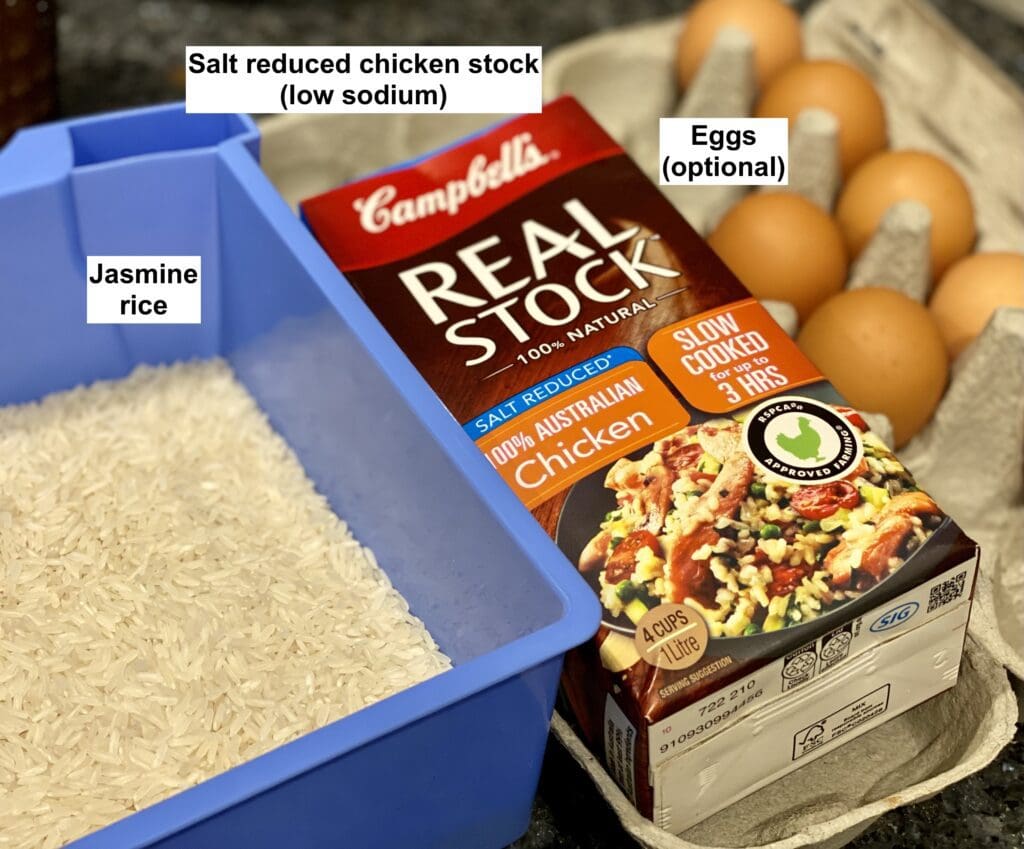
Jasmine rice – I prefer Jasmine rice because it’s high in starch and breaks down to a nice texture. The starch also helps thicken the congee nicely.
Chicken stock – If you wish to keep the sodium low, swap chicken stock for an equal amount of water to make Plain Congee. Plain congee is ideal for babies under 12 months old.
Subscribe to 3CatsFoodie’s FREE Newsletter

For the latest recipes and other fun stuff!
How to make Congee For Baby
Step-by-step guide with photos

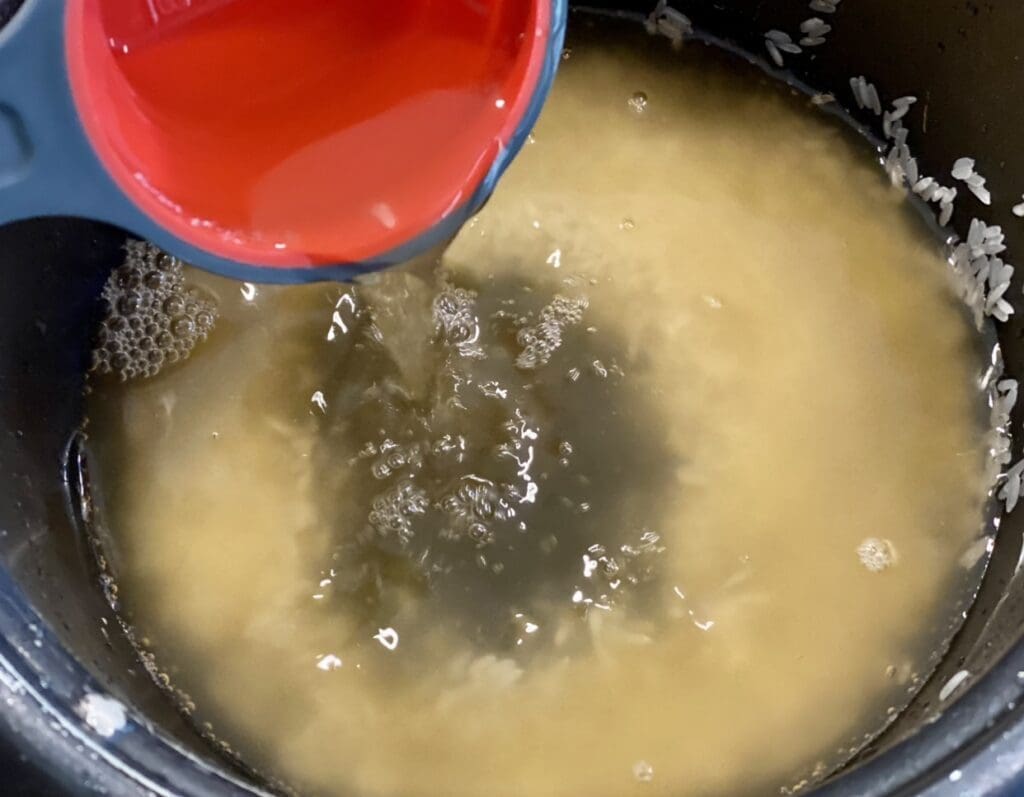
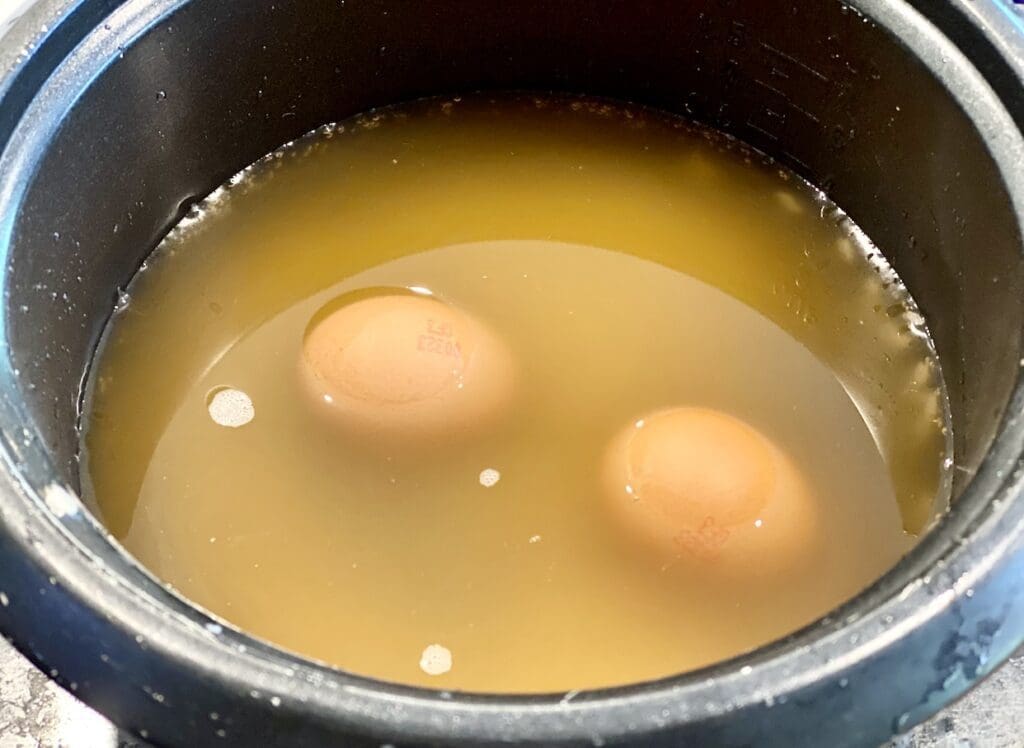
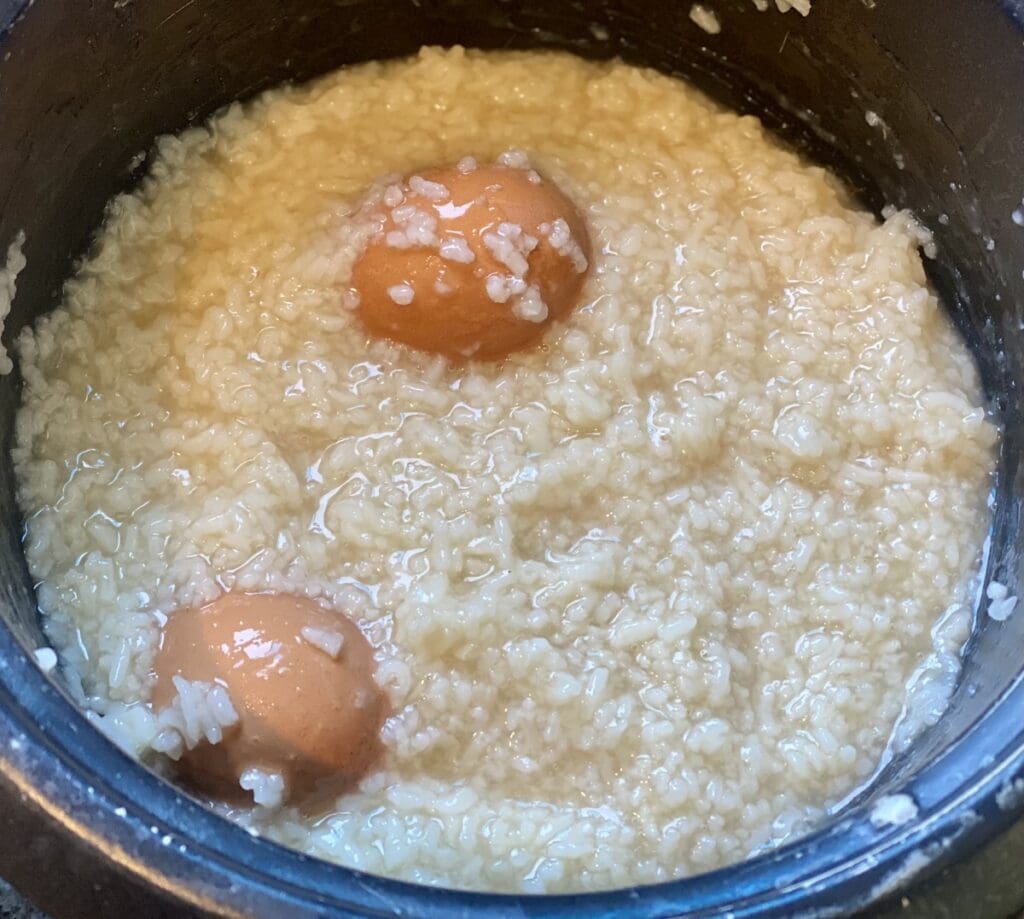
Using a rice cooker – Rinse the rice a few times using a fine strainer and drain the water. Place the rice in the rice cooker with water, stock and eggs (if using).
Cook for one rice cooker cycle, as you would normally do with rice. However, leave the lid ajar to allow more steam to escape. The high amount of water in the rice cooker may cause it to overflow if covered completely.
Once done, remove the eggs and stir the congee. The rice grains should be soft and slightly broken, and the porridge should be quite thick. It’ll thicken more when cooled, as the rice will continue to absorb the water. For a runnier congee, add 0.5 to 1 cup of more water and cook the porridge for another cycle.
Over the stovetop – Rinse the rice a few times using a fine strainer and drain the water. Place the rice, water and stock into a medium heavy-based saucepan.
Bring the mixture to a boil over high heat then reduce it to medium-low. Simmer for 30-40 minutes and stir occasionally so the rice doesn’t catch at the bottom. The congee is done when the rice has softened and broken down, and the porridge has thickened. If the congee is too thin, cook it for longer. If it’s too thick, add more water to loosen it up, then bring it back to a boil before removing it from the heat.
Leftovers – Allow the congee to cool completely at room temperature, then transfer it into a sealed container and store it in the fridge. It should be good for 3 days or 3 months if frozen.
I’ve used a third-party application to calculate the calories and nutritional information, so please use this as an approximate guide only.
Cooking measurements are in Australian standard spoon and cup measurements. For specific details and conversions, visit our Australian Cooking Measurements page.
I would love your feedback and support if you made this recipe. To do this, please rate this recipe and provide a comment by scrolling down this page or by clicking that green circle on the bottom left. An email address is required (for spam), but it won’t be published. I would also love to see your dish, so don’t forget to tag me on my Instagram account ‘3catsfoodie’
Cheers – Cat T
Watch my Prune and Pear Puree for baby video
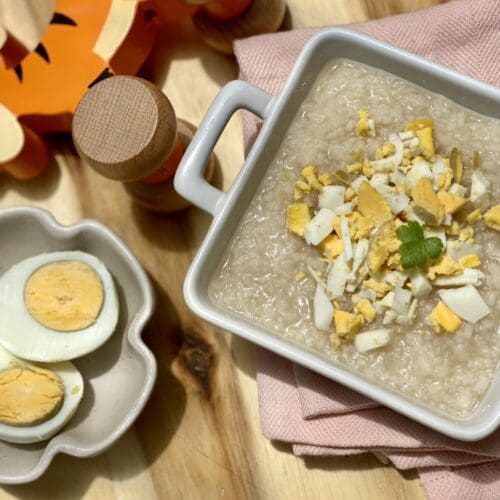
Congee For Baby
Ingredients
- ½ cup raw Jasmine rice (NOTE 1)
- 2¼ cup salt-reduced chicken stock (NOTE 2)
- 2¼ cup water
- eggs (optional)
Instructions
- Using a rice cooker – Rinse the rice a few times using a fine strainer and drain the water. Place the rice in the rice cooker with water, stock and eggs (if using). Cook for one rice cooker cycle, as you would normally do with rice. However, leave the lid ajar to allow more steam to escape. The high amount of water in the rice cooker may cause it to overflow if covered completely.Once done, remove the eggs and stir the congee. The rice grains should be soft and slightly broken, and the porridge should be quite thick. It'll thicken more when cooled, as the rice will continue to absorb the water. For a runnier congee, add 0.5 to 1 cup of more water and cook the porridge for another cycle.

- Over the stovetop – Rinse the rice a few times using a fine strainer and drain the water. Place the rice, water and stock into a medium heavy-based saucepan.Bring the mixture to a boil over high heat then reduce it to medium-low. Simmer for 30-40 minutes and stir occasionally so the rice doesn't catch at the bottom. The congee is done when the rice has softened and broken down, and the porridge has thickened. If the congee is too thin, cook it for longer. If it's too thick, add more water to loosen it up, then bring it back to a boil before removing it from the heat.


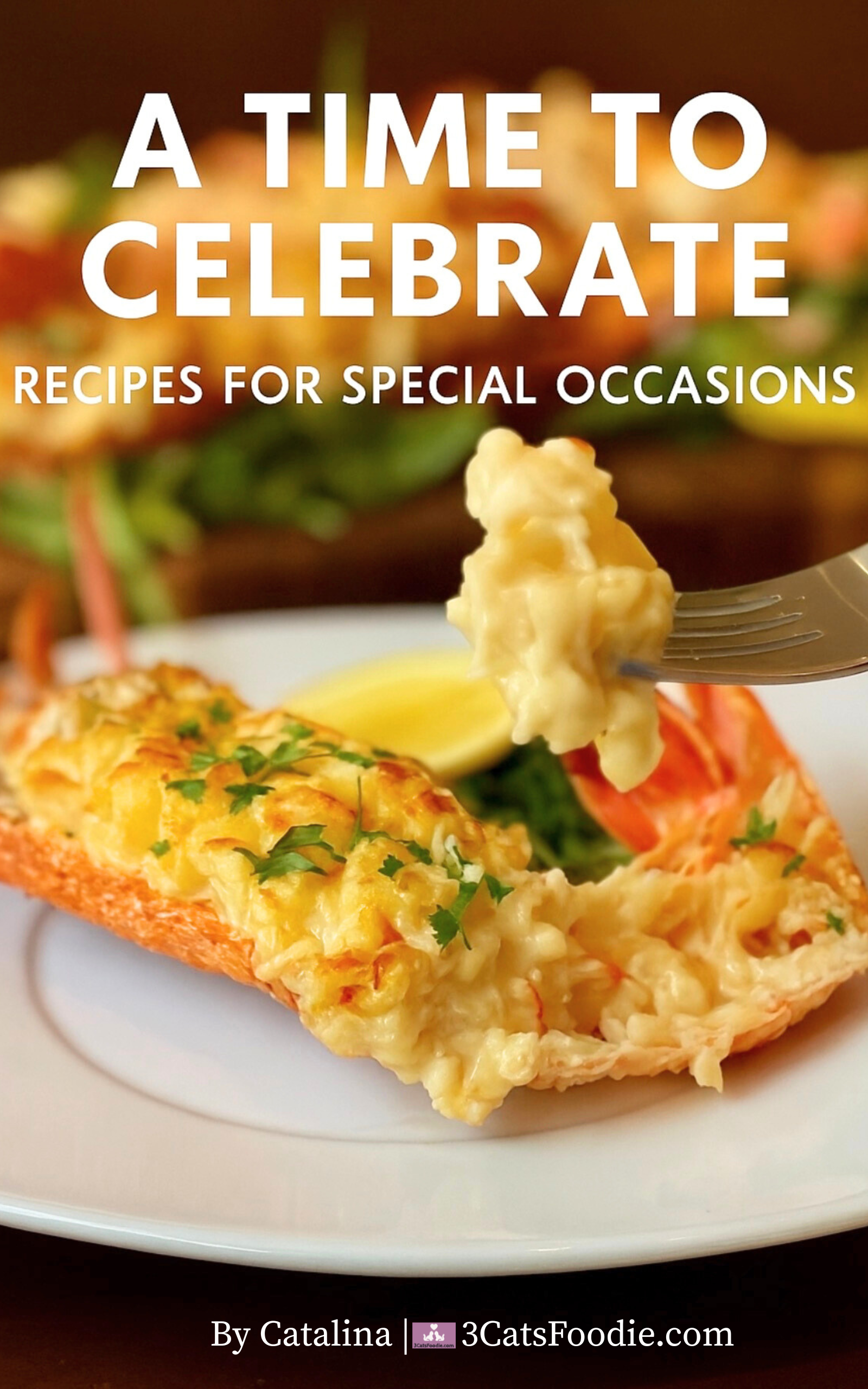
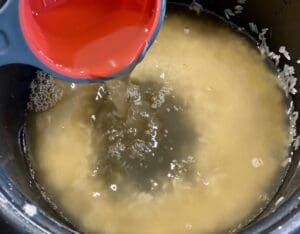
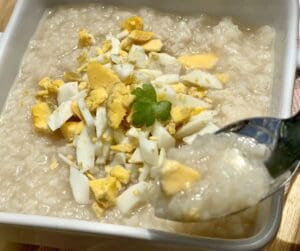
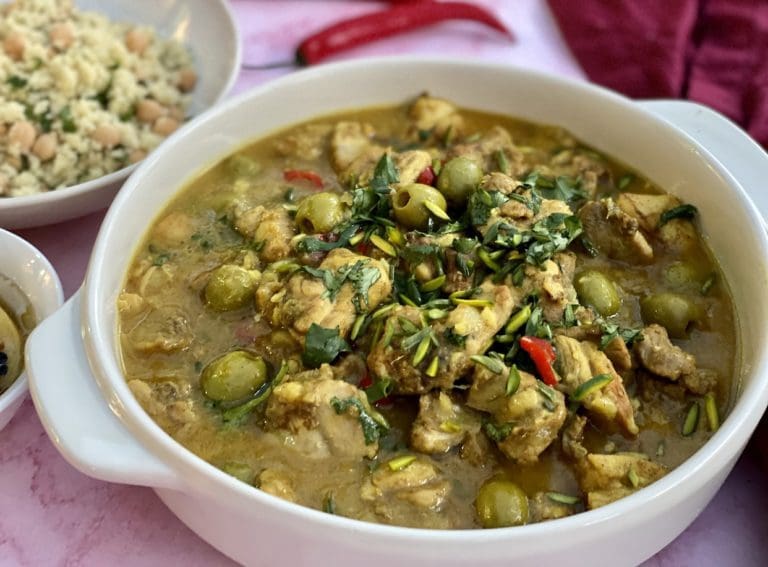

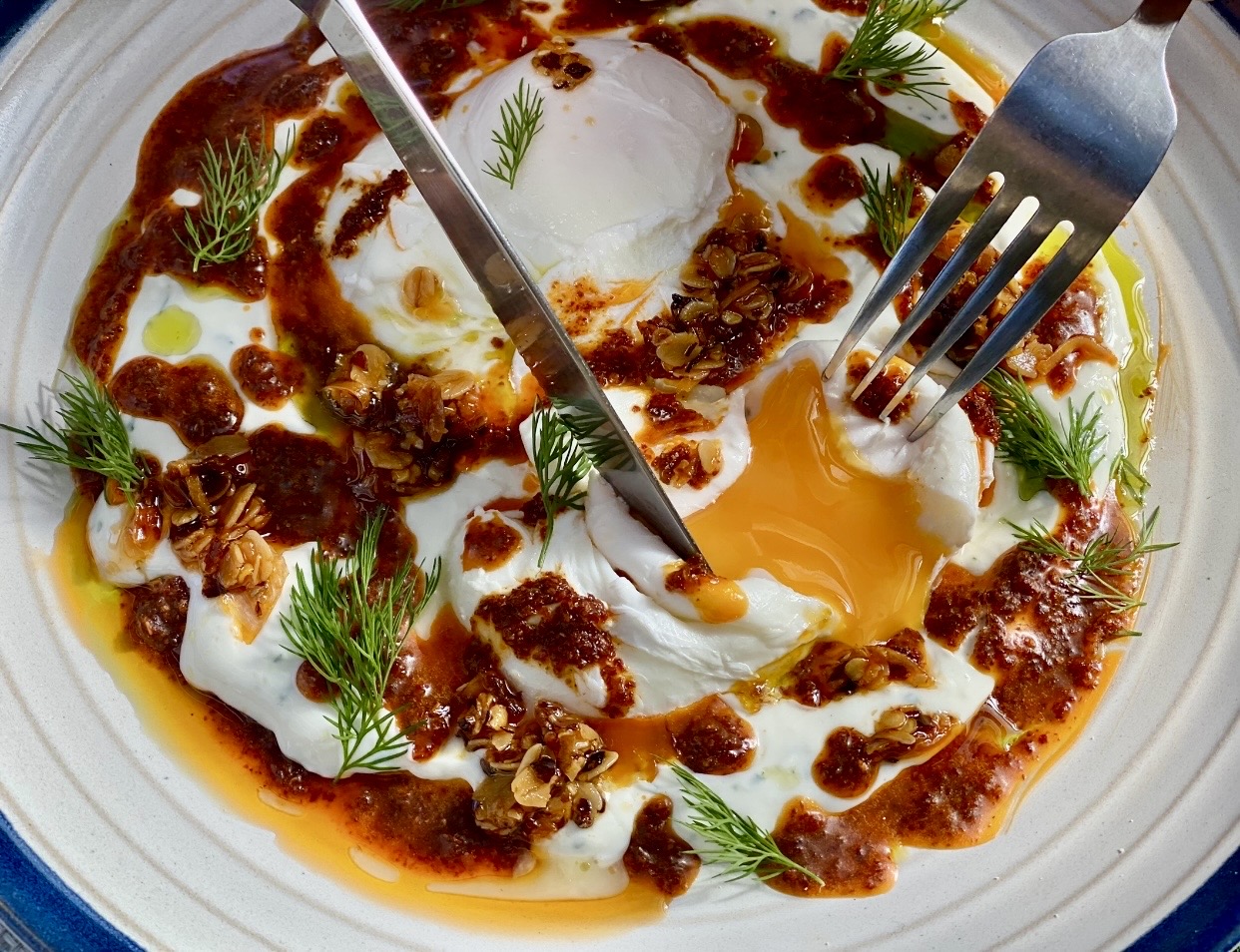
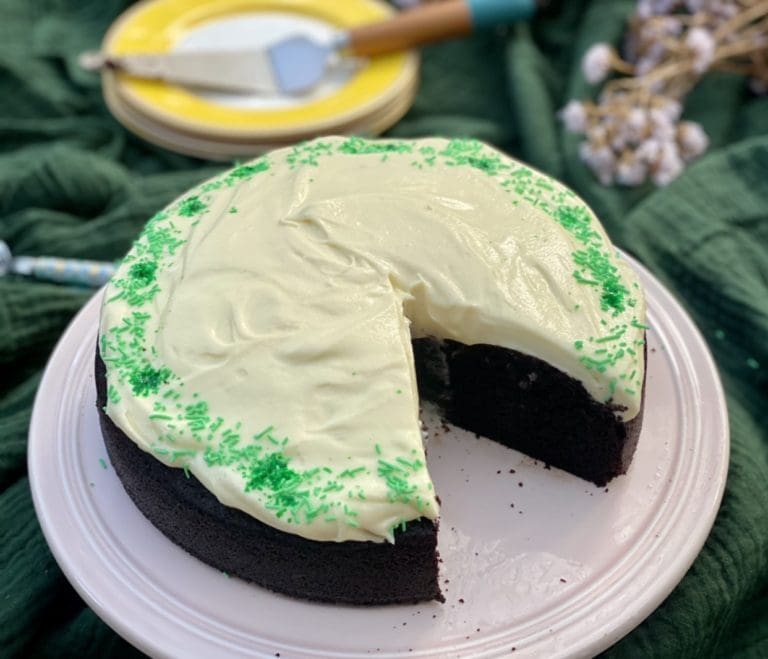
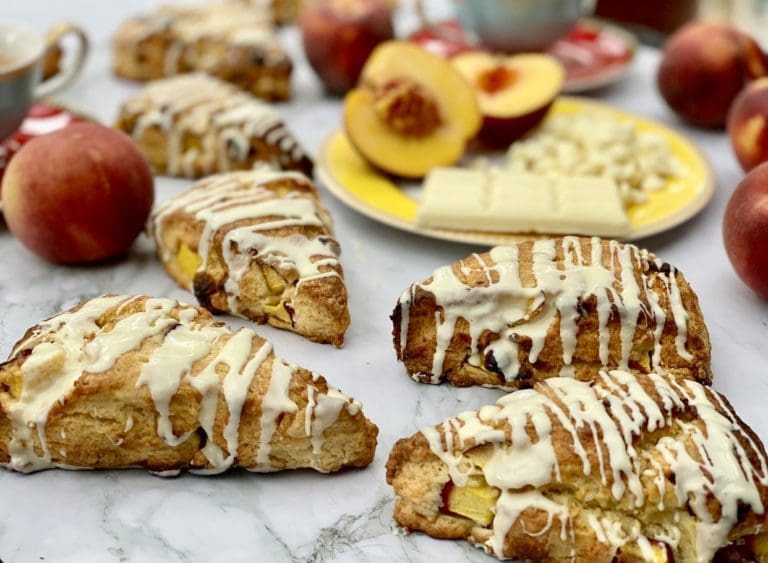
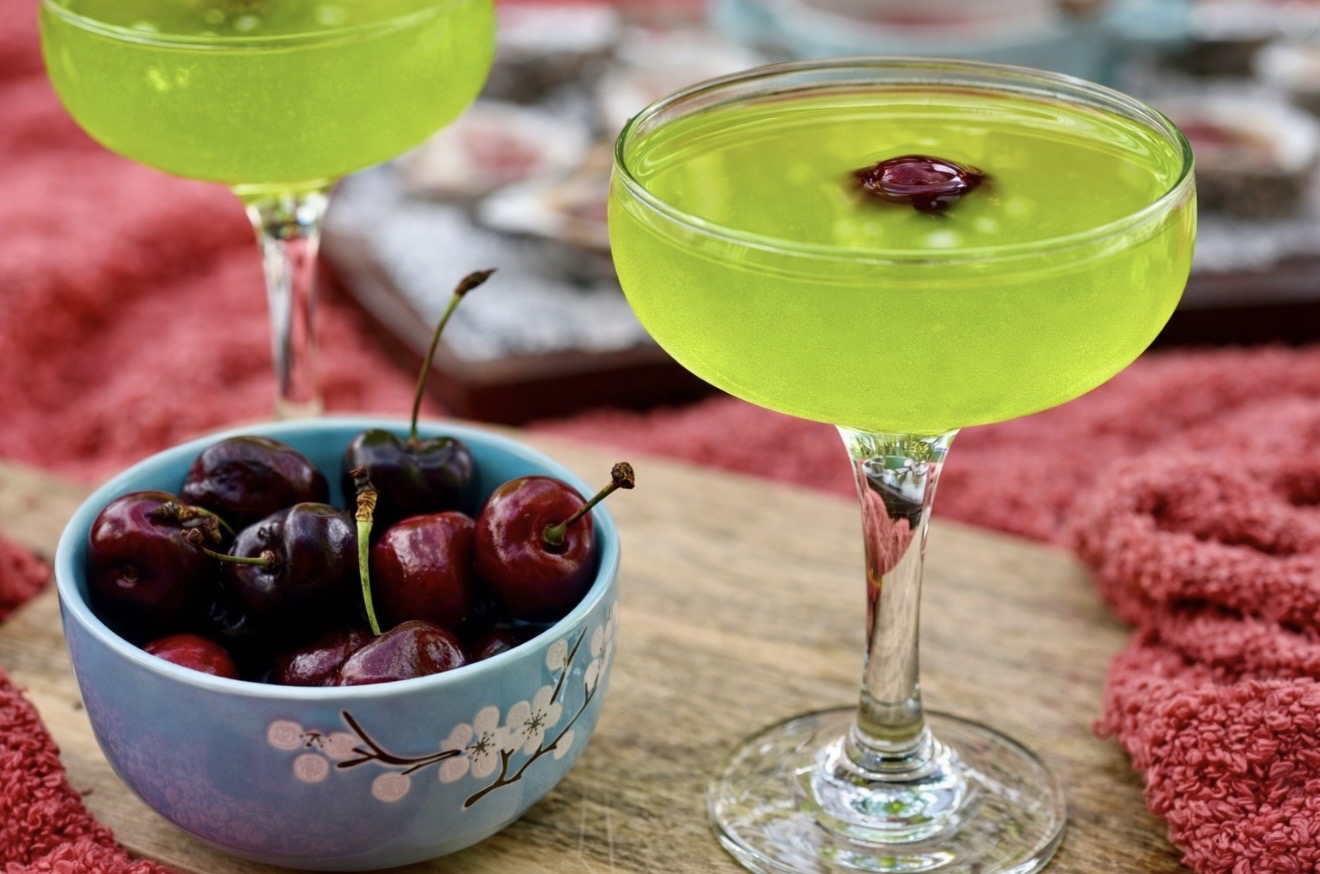
Quick and smooth
Sure is! Thanks, Jah for taking the time to rate this recipe 🙂